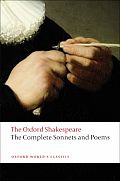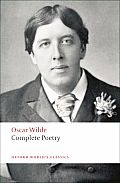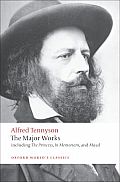By Robert P. Irvine
As we sit down to enjoy our Burns Suppers on Friday, it is worth pausing to ask ourselves just how well we know some of the songs and poems that are a feature of the occasion. Editing and presenting a selection of his texts in the order in which they were published, taking as my copy-text the version of the poem or song published on that occasion, has given me many new insights into the original contexts of Burns’s work. The advantage of this procedure is that it invites the modern reader to think about the Burns encountered by his first readers, the public Burns of the 1780s, 1790s and later, helping us (I hope) to bypass some of the cultural baggage that has accumulated around the poet and to come at his work afresh.
 The results of this can occasionally be surprising. Let me take one example: ‘Bruce’s Address to his troops at Bannockburn’, often known as ‘Scots, wha hae’. This song was first published, anonymously, in the London daily Morning Chronicle for 8 May 1794. Under the owner-editorship of James Perry (born Pirie, in Aberdeen) this was the widely-read national journal of the Charles James Fox’s party in the Commons, bitterly opposed to the government of William Pitt and sympathetic to the French Revolution. Simply putting it in this context directs the reader to its original meaning, as a song celebrating not medieval Scottish resistance to English overlordship, but the contemporary mobilisation of the French people in the levée en masse in response to the new coalition ranged against their new republic. But the poem we find in the Morning Chronicle is not the one we think we know. It begins:
The results of this can occasionally be surprising. Let me take one example: ‘Bruce’s Address to his troops at Bannockburn’, often known as ‘Scots, wha hae’. This song was first published, anonymously, in the London daily Morning Chronicle for 8 May 1794. Under the owner-editorship of James Perry (born Pirie, in Aberdeen) this was the widely-read national journal of the Charles James Fox’s party in the Commons, bitterly opposed to the government of William Pitt and sympathetic to the French Revolution. Simply putting it in this context directs the reader to its original meaning, as a song celebrating not medieval Scottish resistance to English overlordship, but the contemporary mobilisation of the French people in the levée en masse in response to the new coalition ranged against their new republic. But the poem we find in the Morning Chronicle is not the one we think we know. It begins:
Scots, wha hae wi’ Wallace bled,
Scots, wham BRUCE has aften led,
Welcome to your gory bed,
Or to glorious victorie!
That word ‘glorious’ is not in the version of the song we sing today. Where did it come from? Well, Burns added two syllables to the last line of each of his verses to make them fit a different tune, one suggested by his publisher, George Thomson. Burns liked this revised version, and sent it in manuscript to some of his friends. This was the song that found its way to the Morning Chronicle; it was also republished from that source in cheap pamphlets later in the decade. So if we are interested in the Burns that radical or working-class readers were reading in the 1790s, we need to read this version of the song, with the longer line ending its stanzas, and sung to a different tune, rather than the version that has come down to us from Burns’s first draft.
Or take the democratic anthem ‘A man’s a man for a’ that’, sung so movingly by Sheena Wellington at the reconvening of the Scottish Parliament in 1999. This was first published, again anonymously, in the Glasgow Magazine for August 1795, like the Morning Chronicle a radical publication. Its famous opening stanza is as follows:
Is there, for honest poverty
That hangs his head, and a’ that;
The coward-slave, we pass him by,
We dare be poor for a’ that!
For a’ that, and a’ that.
Our toils obscure, and a’ that,
The rank is but the guinea’s stamp,
The man’s the gowd for a’ that.
Yet this stanza is missing from the poem in the Glasgow Magazine. Why should this be? We have no manuscript evidence that Burns ever wrote a version of this poem without this stanza, on which the magazine might have based their copy. But a clue as to the reason for its omission might lie in that phrase, ‘coward-slave’. Burns here, as elsewhere, uses the term ‘slave’ to mean ‘one who submits to tyranny’, who does not fight for his political liberty: a meaning familiar from seventeenth- and eighteenth-century political rhetoric. But the late eighteenth century had seen the rise of a campaign against slavery in quite different sense: the slavery endured by Africans in Britain’s West Indian colonies. The radicalism of the Glasgow Magazine included adherence to such modern causes. The same issue that includes Burns’s poem comments on recent complaints about the disruption that war with France was causing colonial trade; but, asks the magazine, ‘of what consequence are the present disappointments of the West India merchants, compared with the miseries of millions of Africans, whom their infamous trafic has reduced to slavery […]?’ It is possible that, in this context, Burns’s reference to ‘coward-slaves’, culpable in their own subjection, looked out-of-place, perhaps out-of-touch with current radical priorities, and the editors decided simply to cut the stanza that contained it.
The Glasgow Magazine version is also the origin of a variant in the opening line of the third (or fourth) stanza, which in all other versions reads, ‘A prince can make a belted knight’. In the magazine, this is ‘The king can make a belted knight.’ Again, this matters if we are interested in the song being read by its first readers, in this case Scottish radicals in the 1790s. But this song is clearly the product of a radicalism that cannot simply be identified with Robert Burns. It is likely that the editors substituted ‘The king’ for ‘A prince’ to make the song more pointedly sceptical towards the British monarchy in particular, rather than monarchy in general, than the version which came to them. We are familiar with the pressure from the government under which Burns worked as soon as he became an employee of the crown. But here is an instance where Burns’s work seems to have censored not by the state, but by his political allies, for whom ‘A man’s a man for a’ that’ as Burns wrote it was perhaps not quite radical enough, or radical in a slightly old-fashioned way. In this case as in so many others, returning Burn’s poems and songs to the versions and context of their first publication can help us qualify and complicate the simplifying versions of his work that have gained currency over the years.
Robert P. Irvine has written on Jane Austen and is the editor of The Edinburgh Anthology of Scottish Literature, 2 vols. (Kennedy and Boyd, 2009), R.L. Stevenson’s Prince Otto for the New Edinburgh Edition of the Works of Robert Louis Stevenson (forthcoming), and Selected Poems and Songs (OUP, 2013).
Subscribe to the OUPblog via email or RSS.
Subscribe to only literature articles on the OUPblog via email or RSS.
Image Credit: By William Hole R.S.A. (The Poetry of Burns, Centenary Edition) [Public domain], via Wikimedia Commons
The post A fresh look at the work of Robert Burns appeared first on OUPblog.

National Poetry Month, is nearing its end, and the royal wedding is just around the corner, so let’s write poems about it. I’ve made some suggestions below, but all forms are welcome. (If you really want to win me over, I suggest attempting my favorite poetic form, the sestina.) Send your poem care of [email protected] and I’ll post what I can tomorrow. (Keep it clean, please. Humor, satire and effusive excitement are welcome, insults are not.)
Additionally, our Twitter followers are eligible to win one of the below Oxford World’s Classics. To enter, tweet:
Take @OUPAcademic’s #royalweddingpoetrychallenge http://oxford.ly/msrv0S
Entries will be accepted all weekend. Winners will be contacted via DM.





* * * * *
ghazal (ghasel; gazal; ghazel) A short lyric poem written in couplets using a single rhyme (aa, ba, ca, da, etc.), sometimes mentioning the poet’s name in the last couplet. The ghazal is an important lyric form in Arabic, Persian, Turkish, and Urdu poetry, often providing the basis for popular love songs. Its usual subject-matter is amatory, although it has been adapted for religious, political, and other uses. Goethe and other German poets of the early 19th century wrote some imitations of the Persian ghazal, and the form has been adopted by a number of modern American poets, notably Adrienne Rich.
cinquain [sang-kayn] A verse stanza of five lines, more commonly known as a quintain. Examples of such stanzas include the English limerick, the Japanese tanka, and the Spanish quintilla; others include the variant ballad stanza employed intermittently by S. T. Coleridge in his ‘The Rime of the Ancient Mariner’ ( 1798 ), and many more varieties with no name.
terza rima [ter-tsă ree-mă] A verse form consisting of a sequence of interlinked tercets rhyming aba bcb cdc ded, etc. Thus the second line of eac
A few more e-reading notes of the thinking-aloud sort, if you don’t mind.
E-readers I’ve tried:
Classics. My favorite platform so far—best looking, most book-like text, fun page-turning effect. Obvious drawback: limited book selection. 99cent download. No cost to download additional titles as they become available.
Stanza. Very nice reading experience. Easy-to-use search function offers huge selection of free and for-purchase books (including Project Gutenberg catalog). Customizable text display (font, size, color). Center tap brings up page meter, options. One-tap page turn (you can select which zone you want to tap).
Kindle for iPhone/iPod Touch. See yesterday’s post.
Books I’ve read on my Touch:
Pride and Prejudice. Picked this for my first e-reading experience because I know and love the book so well. Read it via the Classics app. Enjoyed it just as much as ever, and loved being able to read in the dark in bed with a single hand. Made me realize e-reading offered its own set of advantages, although I will always prefer the sensory pleasures of a “real” book.
Down and Out in the Magic Kingdom by Cory Doctorow. Stanza. E-reading felt entirely appropriate for this futuristic novel! Great fun.
Little Brother by Cory Doctorow. Stanza. Found myself wanting a hard copy to flip back and forth in. Fast-paced suspenseful techie novel; I wound up obsessively tapping for the status meter so I’d know how far I had to go—how long I had to keep holding my breath! This was the first time I started to wonder about the relationship between pacing and book format.
Ethan Frome by Edith Wharton. Stanza. As I said yesterday, I felt curiously distanced from this stark, bleak novel, and couldn’t tell how much that had to do with the book itself, and how much was because of the e-reader. Is it just me, I wondered? Do other people engage as deeply with the characters in books they read on their phones, or does the small screen showing only a paragraph at a time pull our consciousness too far into the forefront, preventing us from total suspension of disbelief? Or is it like that because it’s new? In five years or ten, will I even notice? Would it be the same on a Kindle, which with its bigger screen and e-ink technology tries very hard to duplicate a hard-copy reading experience? Would Amazon kindly send me a Kindle on which to test the theory?
The Chosen One by Carol Lynch Williams. Kindle for iPhone. Well, you know how that went.
Short stories: “The Dead” by James Joyce; “The Curious Case of Benjamin Button” by F. Scott Fitzgerald. Stanza.
Things I like about reading on my Touch:
I can hold it in one hand and turn pages with a tap of my thumb. For a nursing mother, this is a great delight. And since the screen is backlit, I can read in bed, sleeping baby to my left, sleeping hubby to my right, and disturb no one, neither with light nor with the rustle of turning pages.
Takes up less space in my bag than a book. My 4-month-old baby weighs almost 19 pounds. Any lightening of my shoulder-load is a blessing.
Thousands of books literally at my fingertips. Hundreds and hundreds of them, all the older classics, for free.
Things I don’t like:
Not as cozy as a book!
If I’m reading a book on the iPod, my kids can’t tell at a glance that I’m reading a book and not, say, email or blogs. And this does bother me. Seems like it’s one thing for a child to see mom curled up with a book, and another thing entirely to see mom staring at yet another screen. “I’m reading Pride and Prejudice!” I’ll find myself saying, or “I’m reading Edith Wharton!” as if to defend myself against complaints no one is even making.
Did you know that Amazon has acquired Stanza, the hugely popular ebook reader for the iPod and iPod Touch? Yep, they have.
Part of what made Stanza so popular, besides being free, was its ability to read multiple ebook formats, and convert ebooks you already own, for free, to the reader. I wonder if Amazon’s going to try to cash in on that? I wonder if they’ve finally realized that open-ebook standards is the way to go?
What do you think?
Read this post for more thoughts on the subject.

 It was a tough week in the world of publishing, but two of the big trade houses: Penguin Books and Random House had some big announcements regarding the digital age.
It was a tough week in the world of publishing, but two of the big trade houses: Penguin Books and Random House had some big announcements regarding the digital age.
Penguin Group USA announced a new program called Penguin 2.0. It included two programs, both centered around a new section on the Penguin Web site which will feature a new blog and access to exclusive Penguin content such as enhanced e-books, videos and special print products. And it also features Penguin Personalized which will allow consumers to add a custom dedication to particular Penguin books, which will be printed POD and shipped. Penguin is starting the program with a holiday-themed title: A Christmas Carol and Other Christmas Writings by Charles Dickens. A dozen more titles will be added in the next few months.
The other piece of Penguin news is Penguin Mobile, an iPhone app, available for free from the Apple App store. The application makes the features of the Web site—the blog, book previews, podcasts, news and Penguin-specific book-finding tools—available on the iPhone.

The e-book offerings in the iPhone just grew significantly with the announcement of a partnership between Fictionwise, one of the largest e-tailers of digital books, and Stanza. What is Stanza? Stanza is a FREE application for your iPhone and iPod Touch. Use it to download from a vast selection of over 100,000 books and periodicals, and read them right on your phone. It’s a wireless electronic library that stays open 24/7.Through this partnership, 40,000 titles from Fictionwise.com will be made available for direct purchase and download through the Stanza by Fictionwise store accessed through the Stanza iPhone application.
Random House also announced a partnership with Stanza, through which e-books by several RH authors will be available for free through Stanza.
The results of this can occasionally be surprising. Let me take one example: ‘Bruce’s Address to his troops at Bannockburn’, often known as ‘Scots, wha hae’. This song was first published, anonymously, in the London daily Morning Chronicle for 8 May 1794. Under the owner-editorship of James Perry (born Pirie, in Aberdeen) this was the widely-read national journal of the Charles James Fox’s party in the Commons, bitterly opposed to the government of William Pitt and sympathetic to the French Revolution. Simply putting it in this context directs the reader to its original meaning, as a song celebrating not medieval Scottish resistance to English overlordship, but the contemporary mobilisation of the French people in the levée en masse in response to the new coalition ranged against their new republic. But the poem we find in the Morning Chronicle is not the one we think we know. It begins:










[...] Original post by Cheryl Rainfield: [...]
[...] Excerpt from: Cheryl Rainfield: » Amazon has acquired… [...]
Cheryl,
Even if Amazon doesn’t get the message about DRM the competition certainly does. As the author of the Flores Girl: The Children God Forgot novel, my eBook is now a featured work at Wattpad.com, which is a free smartphone competitor to Stanza, and I have to say that the reader response has been overwhelming to my novel. People like the convenience of their iPhone and they really don’t want to carry another device around, i.e. the Kindle, so Amazon is basically hedging their bets with this acquisition.
Cheers,
Erik John Bertel
http://www.floresgirl.com